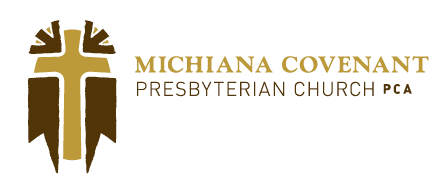Reading Genesis 29-31 in Family Worship
Genesis 25:19-37:1 (The Generations of Isaac)
This week we are looking at part two of the “Generations of Isaac.” The “Generations of Isaac” can be seen in three basic movements:
Genesis 25:19-28:22 — Jacob and Esau
Genesis 29:1-31:55 — Jacob in Paddan-Aram
Genesis 32:1-37:1 — Jacob and Esau
Genesis 29:1-30
Once again, if you hang out at a well, you are likely to find a wife (or two, in this case!). It is interesting to compare the case of Jacob with that of Isaac. In Isaac’s case, Abraham sent his servant with lots of gifts — and so Laban sent his sister Rebekah away with him almost immediately. In Jacob’s case, he arrives alone and empty-handed — and so Laban requires him to work for his bride.
Why is this? If Jacob has the birthright and the blessing of Isaac, then he is arguably just as wealthy as Isaac. In a couple of chapters, when we return to the Promised Land, we will discover that Esau has all of Isaac’s stuff. This causes us to reconsider what is going on in Jacob “deceiving” his way into the birthright and the blessing. Jacob never receives any material benefit from obtaining the birthright and blessing. But then again, that wasn’t the reason why he wanted the birthright and blessing. He wanted the birthright and blessing because he was a blameless man — an upright man who desired to be the heir of the Promise. When he goes to his uncle Laban, Jacob goes empty-handed without any guarantee of material possessions. If he was going to inherit all of Isaac’s property, he could have brought the sorts of gifts that Abraham’s servant had brought — but all he can bring is the Promise that he is the Seed of Abraham. [You can hear Laban’s response: “Yes, but how are you going to support my daughter?”]
And then, of course, Laban tricks Jacob into marrying Leah first — suggesting that perhaps Laban had had some trouble finding a suitor for her. Certainly this offers some delicious irony: Jacob had supplanted his older brother, the firstborn. Now he runs into the same hurdle again — this time on the distaff side — and so he is forced to marry the older sister first!
Later, in Leviticus 18, God will forbid Israelites to take two sisters as wives. (Polygamy is only forbidden in the New Testament). But the history of Leah and Rachel certainly provides a practical objection to the practice!
Genesis 29:31-30:24
Over the course of 7 years Jacob’s two wives and two concubines produce 11 sons and afterward at least 1 daughter — I say “at least” one daughter because Dinah is only named because she will have a role later in the narrative. This is not particularly a prejudice against women — because the only men who are named are also those who play a part in the narrative. Laban apparently had sons — but none of them are named in the story — only his daughters.
(And yes, it is quite possible for four women to bear 11 sons in 7 years. If you assume 13 months in between births from one woman, but that the concubines are bearing simultaneously — and that Leah and Rachel were both pregnant together with Leah’s last son and Rachel’s first — you can easily make the chronology work!)
But talk about domestic dysfunction! The domestic squabbles between the sisters take center stage — but so that no one may doubt who drives the narrative: “When the LORD saw that Leah was hated, he opened her womb, but Rachel was barren.” One sister is loved — but barren; the other sister is fruitful — but hated. Each wants what the other has. But God will use even this squabble to produce the Twelve Tribes of Israel.
Genesis 30:25-43
Now it only gets worse. Jacob has now worked 14 years for Laban — but Laban wants to manipulate Jacob and “tap into” the blessing of Yahweh. Instead, the LORD blesses Jacob. Don’t think that Jacob engages in “magic” here. Every Israelite breeder knew full well that this trick could not be reproduced. It only works if God blesses. It is the equivalent of Gideon’s fleece. “If you give me the offspring of these sheep and goats, then I will know that you are with me.”
Genesis 31
So over the course of the next six years, Laban apparently changed Jacob’s wages ten times — and every time he changed them, God providentially overrode Laban’s schemes. But as a result, Laban’s unnamed sons started to grumble against Jacob. When the LORD called him to return to the Promised Land, Jacob willingly obeyed. “I am the God of Bethel, where you anointed a pillar and made a vow to me. Now arise, go out from this land and return to the land of your kindred.”
Rachel and Leah both agree — but Rachel steals her father’s household gods (we don’t know much about this – probably figurines representing various deities). As you read this chapter, pay attention to how people talk about “God.” Laban talks about “the God of Abraham and the God of Nahor, the God of their father” — while Jacob speaks of “the God of my father, the God of Abraham and the Fear of Isaac” — yet both will refer to him as “Yahweh” (the LORD). So, did Nahor and Laban worship the same God as Abraham, Isaac, and Jacob?
Probably. The worship practices of Nahor and Laban seem problematic (they should not have these graven images), but then again, how much had God actually revealed regarding worship and life? Tthe Ten Commandments have not yet been given, and we have almost no knowledge of any special revelation given in between the days of Noah and the days of Abraham. Imagine, if you will, what it would mean to “worship the LORD” in those days! Had God revealed anything in the few thousand years between Noah and Abraham? If so, we have no record of it!
For this reason, I would suggest that we not judge Laban too harshly. He has very little revelation to work with — and when God appears to him and warns him, he obeys. Honestly, he does better with the very little revelation he had than most people who have the whole of the scriptures in front of them!
One of my favorite scenes, though, is when Rachel is squatting over the household gods. The text, after all, comes from someone who already knows that household gods are idols. What is she doing with them? Bleeding all over them. It’s a fitting picture.
But we close with Jacob and Laban making a covenant — and celebrating a covenant meal — over the pillar of witness at Mizpah. And so, for all of the friction between Jacob and Laban over the previous 20 years, they conclude by making peace.




